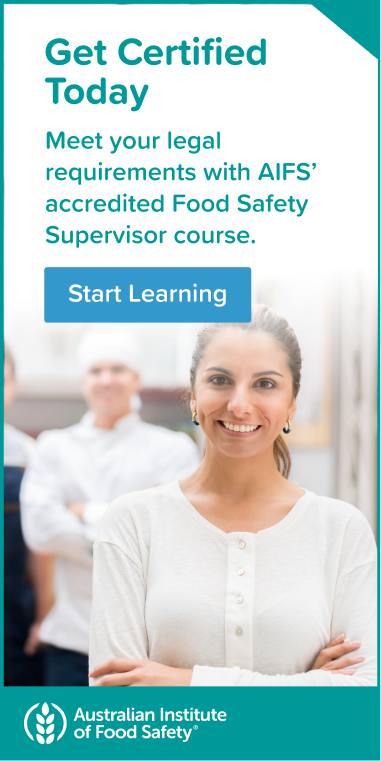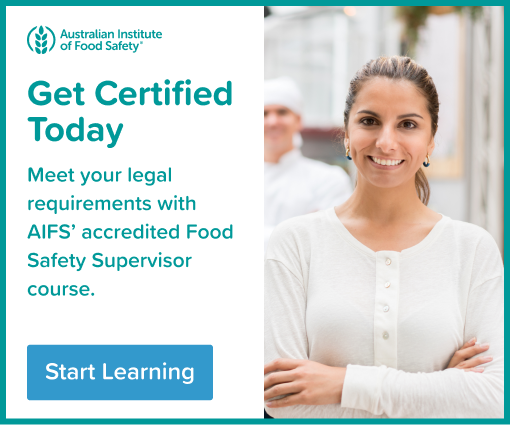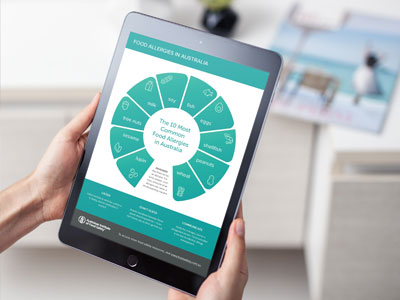.jpg?width=820&height=462&name=Adobe%20Express%20-%20file%20(54).jpg)
Safe meat handling is one of the most important responsibilities in food service. From delivery to cooking, every stage carries a risk of contamination if not managed properly.
Following strict procedures helps protect customers from food-borne illness, keeps your business compliant with Australian regulations and builds consumer trust in your operation.
Why is it important to handle meat correctly?
Food-borne illness impacts around 4.7 million people a year in Australia, with meat and poultry among the most common culprits. Contamination can occur through poor refrigeration, unsafe cooking or cross-contact with other foods.
Under the Food Standards Code, businesses are legally obligated to handle meat safely. Having strong procedures not only protects public health but also safeguards your business from penalties and reputational damage.
What should you look for before accepting meat deliveries?
Your responsibility begins when meat arrives at your premises. Accepting unsafe deliveries compromises every step that follows.
Temperature checks:
- Refrigerated meat must be 4°C or colder
- Frozen meat must be -18°C or colder
Reject meat if it shows:
- Off odours or a slimy, sticky texture
- Unusual discolouration (brown or green patches)
- Damaged packaging or missing inspection/approval marks
Tip: Always purchase from approved suppliers who follow strong cold-chain practices.
How do you store and prepare meat safely?
Once accepted, meat must be stored in conditions that prevent bacterial growth and cross-contamination.
- Store raw meat on the lowest shelf of the fridge, sealed to avoid drips
- Keep refrigeration equipment at 4°C or below
- Freeze at -18°C or below
- Label all meat with delivery and storage dates
- Minced or chopped meat should be used within 24 hours
When preparing foods, use separate utensils, chopping boards and work areas for raw meat and ready-to-eat foods. If sharing preparation areas, always prepare fresh produce first and sanitise surfaces before handling meat.
How should you defrost frozen meat?
Improper defrosting can leave meat in the Temperature Danger Zone (5°C to 60°C), where bacteria multiply rapidly.
- Best method: Defrost meat in the refrigerator on the bottom shelf
- Acceptable alternative: Defrost food in the microwave according to the manufacturer’s instructions and cook it immediately after it has defrosted
Never defrost at room temperature, as bacteria can spread quickly. If meat is defrosted safely and has remained at or below 4°C, it may be refrozen.
What temperature should meat be cooked to?
Cooking is the final safeguard against harmful pathogens like Salmonella and E. coli. Always verify with a food thermometer rather than relying on colour.
Here are the minimum internal temperatures that need to be achieved during the cooking process:
- Beef, lamb, veal (steaks/roasts): 63°C (rest for 3 minutes)
- Minced meat, sausages, burgers: 75°C
- Pork: 70°C
- Poultry (whole): 82°C
- Poultry (ground or pieces): 74°C
Reminder: Insert the food thermometer into the thickest part of the meat, avoiding bone or fat for accurate readings.
A helpful poster outlining safe temperatures for different foods is available in the Australian Institute of Food Safety (AIFS) Member Resource Library. Download, print and display it in your kitchen in your kitchen to keep staff reminded at all times.
Training staff in meat safety procedures
Procedures are only as strong as the staff implementing them. Training ensures workers know how to:
- Inspect and only accept safe meat deliveries
- Store meat at correct temperatures
- Prevent cross-contamination during preparation and storage
- Defrost and cook meat according to food safety standards
Building customer confidence through compliance
Every stage of meat handling - from receiving deliveries to serving plates - affects customer safety. By training your team and following proper meat safety protocols, your business can reduce risk, comply with legislation and strengthen its reputation.
The Australian Institute of Food Safety (AIFS) supports food businesses across Australia by providing nationally recognised training designed to help food businesses manage high-risk foods like meat.
Frequently Asked Questions
Q. What temperature should meat be stored at?
A. Refrigerated meat must be kept at 4°C or below, and frozen meat at -18°C or below.
Q. Can I refreeze defrosted meat?
A. Yes, as long as it was defrosted safely in the fridge and has not risen above 4°C.
Q. Is a food thermometer needed when cooking meat?
A. Yes. Colour is not a reliable indicator of doneness. Only a thermometer confirms the correct internal temperature has been reached.
Q. What are the dangers of cross-contamination with raw meat?
A. Bacteria from raw meat can transfer to ready-to-eat foods, increasing the risk of food-borne illness.
About the author
Bethany Gibson
With over 10 years’ experience in hospitality training and assessment, Bethany Gibson - now Training Operations Manager at the Australian Institute of Food Safety - uses her passion for hospitality education to help others strengthen food safety knowledge and confidence across the industry.




